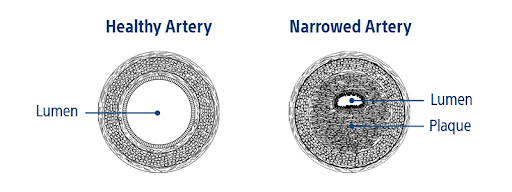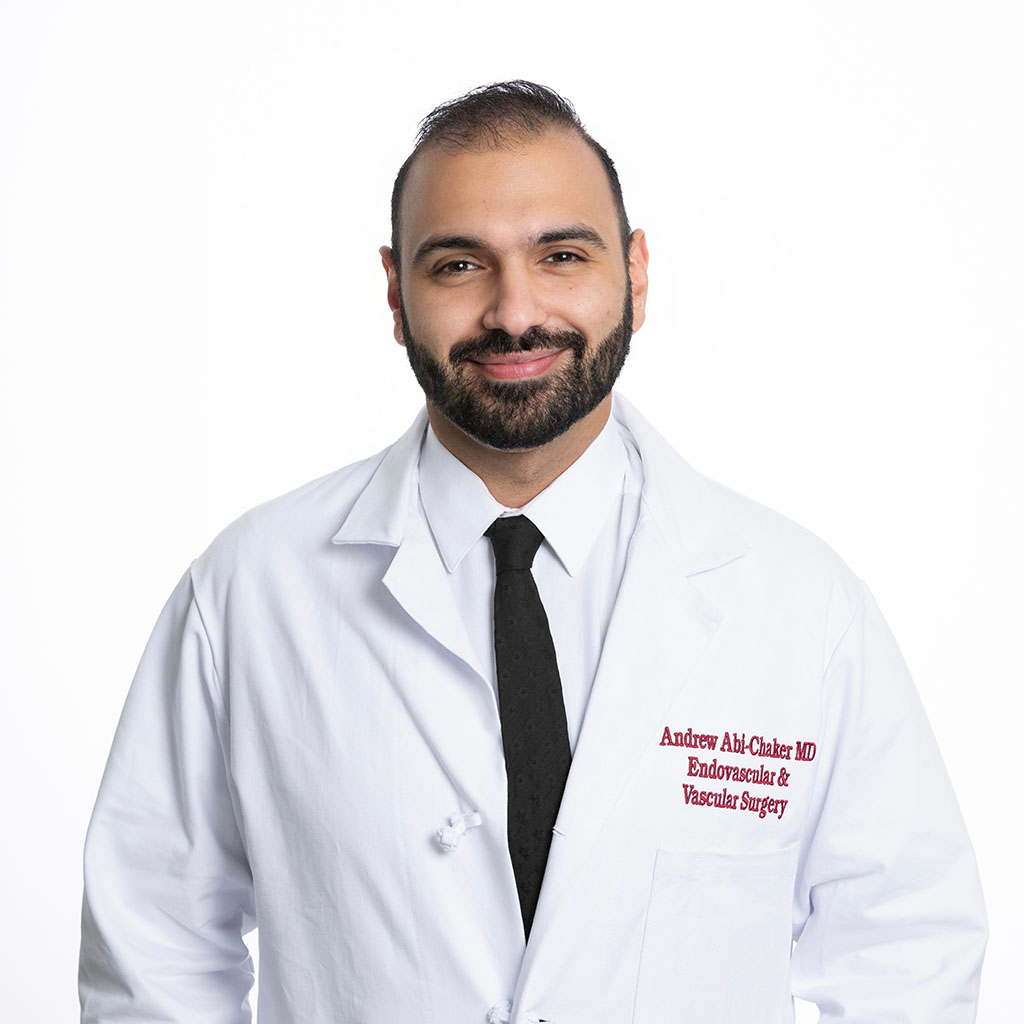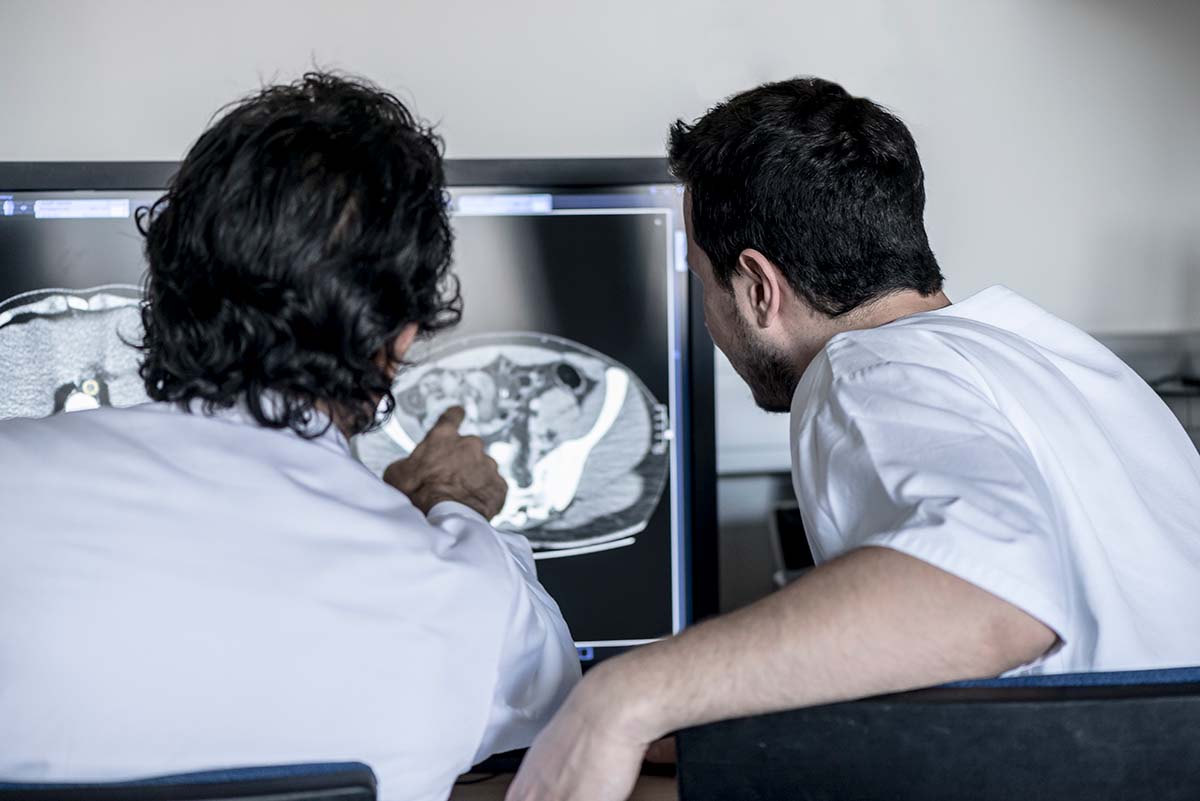What is Peripheral Artery Disease (PAD)?
Peripheral artery disease is a circulatory condition that causes a narrowing or sometimes a complete blockage in your arteries reducing blood flow to your arms or legs – usually the leg. This process is caused by a buildup of fatty cholesterol deposits or plaque called atherosclerosis, as the disease progresses the plaque can harden into calcium. Blood vessels that become completely blocked or calcified can be more difficult to treat and should only be treated by vascular specialists that have experience with advanced treatment techniques, like Drs. Eghbalieh and Abi-Chaker.
If blockages remain untreated and your body is not able to get enough blood to your legs and feet you could develop tissue death or gangrene, which could result in amputation. This advanced stage of PAD is known as critical limb ischemia (CLI).
Peripheral Artery Disease Q & A
Peripheral artery disease causes a narrowing or sometimes a complete blockage in your arteries reducing blood flow to your arms or legs.
What are the risk factors for Peripheral Artery Disease?
- Current or previous smoker
- High blood pressure
- Age > 50 years old
- Diabetes
- High cholesterol
- Coronary artery disease
- Atherosclerosis
- African American
- Family history
- Obesity
What are the symptoms of Peripheral Artery Disease?
- Claudication or leg pain while walking or during activity. For some people with PAD this pain disappears with rest.
- Painful cramping in the hip, thigh or calf
- The feeling of pins or needles or numbness in your leg or foot
- Feeling of coldness that occurs in one leg/foot more than the other
- Sores on the legs, feet or toes that do not heal
- Changes in the color of the skin on the leg or foot. Skin will appear pale, discolored or blue.
- Loss of hair or slow growing hair on the legs and feet
- Slow growing toenails
- Shiny skin on the legs or feet
- Weak or no pulse in the legs or feet
Treatment Options for Peripheral Arterial Disease
If you have been diagnosed with PAD, there are several treatment options. If you catch the disease in the early stages, you can be treated with medication and lifestyle changes. However, if you have more severe PAD such as critical limb ischemia or a chronic total occlusion (CTO), you will likely require some form of surgical or endovascular intervention.
Drs. Eghbalieh and Abi-Chaker specialize in the newest advanced treatments for PAD using minimally invasive and/or endovascular treatments. It is important to only see a vascular surgeon that specializes in peripheral artery disease for treatment. Vascular surgeons are the only specialty that can offer you either a surgical or endovascular treatment for your PAD. They receive many years of specialized training in treating peripheral artery disease. Although the preferred treatment is minimally invasive endovascular surgery, sometimes the best long-term treatment is surgery. Cardiologists and Radiologists can only treat PAD with endovascular options, they may need to do multiple operations and still end up referring you out to a vascular surgeon in the end.
The following are treatment options for PAD:
- Endovascular repair with nitinol stent, balloon expandable stent, Drug Coated Balloon (DCB), Drug Eluting Stent, atherectomy, and/ or Shockwave™
- Surgical repair using bypass
- Surgical endarterectomy
- Minimally invasive repair using a combination of bypass and stenting
Learn More About PAD & Explore PAD Treatment Options Near You:
Los Angeles, West Los Angeles, Beverly Hills, Universal City, Glendale, Pasadena, Burbank, La Crescenta-Montrose, La Cañada Flintridge, Santa Monica, Culver City, Van Nuys & Valley Glen, Studio City, North Hollywood & the NoHo Arts District, Panorama City, Brentwood, Westwood, Century City, Santa Clarita, Lancaster, Palmdale, Stevenson Ranch, Castaic, Canyon Country, Newhall, San Fernando, Twin Lakes, Simi Valley, Moorpark, Brandeis, Sylmar, Pacoima, Granada Hills, Northridge, Chatsworth, Calabasas, Agoura Hills, Westlake Village, Topanga, Hidden Hills, Thousand Oaks, Encino, Reseda, Winnetka, Woodland Hills, West Hills, Sherman Oaks, Tarzana, Porter Ranch and Valencia.
Our Vascular & Endovascular Surgeons
It's important to remember not all physicians are trained in advanced vascular and endovascular surgery. It’s a good practice to get multiple opinions and do research on the surgery and the physician.







